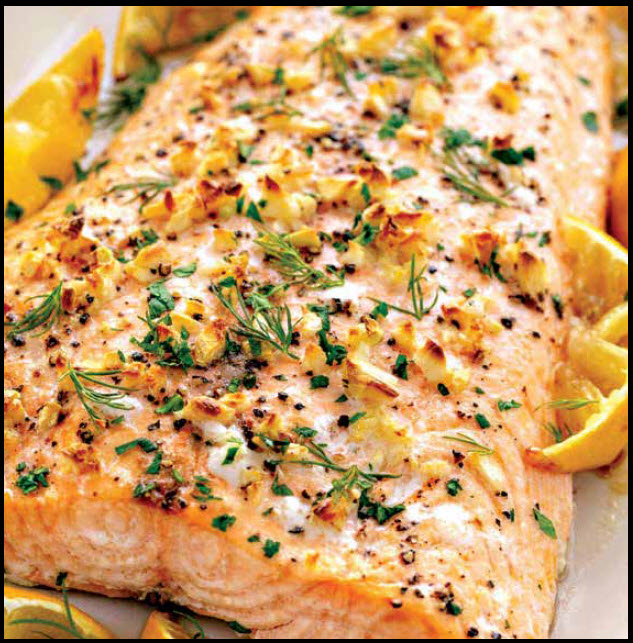Why Not Swim Upstream
 By: Nick Thomas
By: Nick Thomas
I think salmon maybe my favorite fish for many reasons, but right out of the gate I love that they go against the flow! Since the best nutrition or fitness choices may not always be the popular or easy ones, I am familiar with the feeling of “swimming upstream.” However, for now, let’s focus on how packed this fish is with health benefits!
Salmon is one of the most nutritious fish/proteins you can eat. Wild salmon has an excellent omega-3 fatty acid content. By keeping a good amount of omega-3 fatty acids in your diet, you reduce inflammation. This is a huge benefit because inflammation is the base of many health problems, including heart disease, diabetes, some types of cancers, and arthritis. Some research even shows that omega-3 fatty acids have the potential to help slow cognitive problems, such as Alzheimer’s disease.

Salmon also has virtually zero carbohydrates making it perfect for those with diabetes. It contains tryptophan, the precursor to serotonin, which helps combat depression. This, combined with being an excellent source of vitamin D, makes it a natural mood booster, along with aiding in bone health.
When it comes to actually picking out your salmon at the store, there are few things you want to keep in mind. First, don’t worry; salmon can be consumed without fear of excess contaminants, such as mercury which can be a concern with other seafood, meaning you can eat it multiple times a week without hesitation. Wild salmon is usually best, but some farm-raised is not a totally bad thing. There is such a wide range of ways to purchase and prepare salmon it helps keep variety in your diet while still using this same nutrient rich fish. Salmon can be purchased fresh, frozen, smoked, or canned. There are also several varieties of salmon which you can try, including king, Atlantic, sockeye, coho, pink and chum. I find the biggest difference to be what texture you prefer, which can be a choice that varies based on how you plan to prepare and cook it.
Salmon is a sturdy fish which holds up to many cooking styles and seasonings. It can easily be grilled, baked, poached, broiled, or pan seared. Since we are discussing health benefits, let’s keep this in mind when seasoning it. Using olive oil and staying clear of heavy, creamy sauces is best. Think of fresh herbs, spices, and lemons as great options to add and switch up flavor, maybe even including some fresh garlic or Dijon mustard and honey on occasion. The fattiness of the salmon is in your favor when cooking it; however, be careful not to overcook it. Simply cook it until it is flakey and changes to an opaque light pink throughout. This should keep it moist and very tasty. Pair it with some fresh, cooked green veggies and brown rice or quinoa, and you have an amazing healthy meal. And here’s a good tip, cook a bit extra and save it for lunch or dinner another night because salmon reheats very well.
For more information regarding a personalized general or sports nutrition plan contact me at Prime Performance 423-805-0870.
By: Nick Thomas
Learn More About Prime Performance…..
